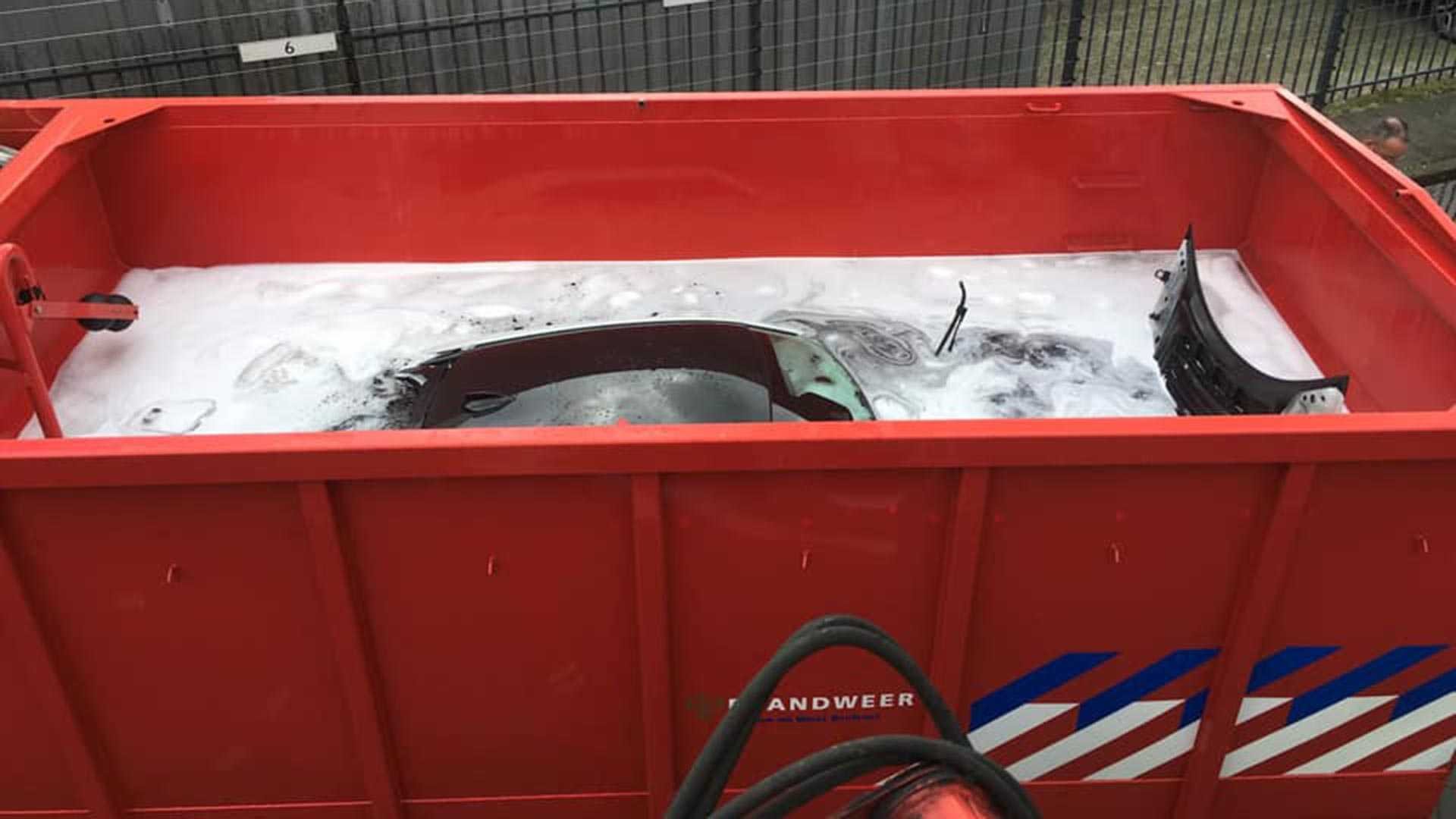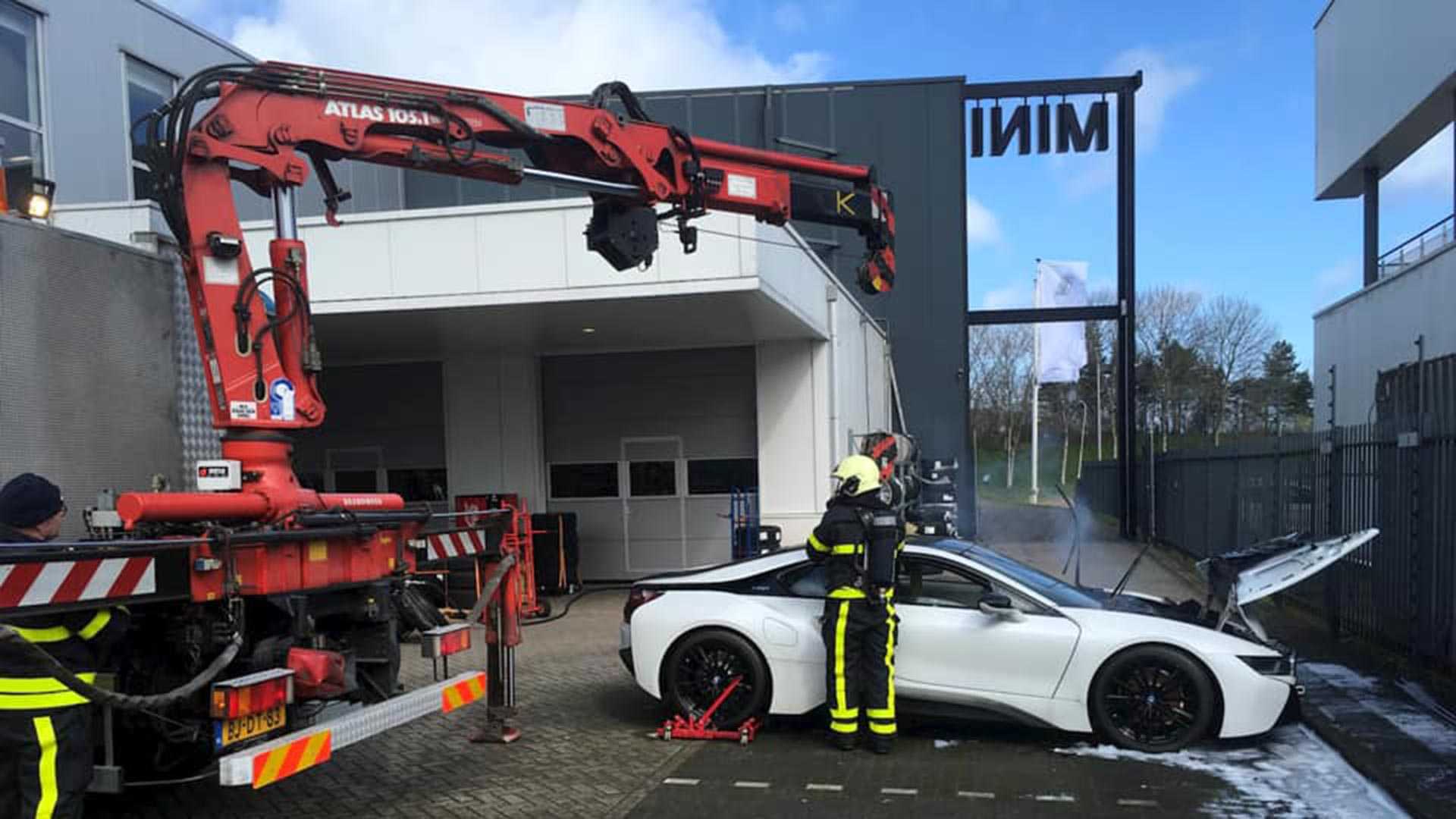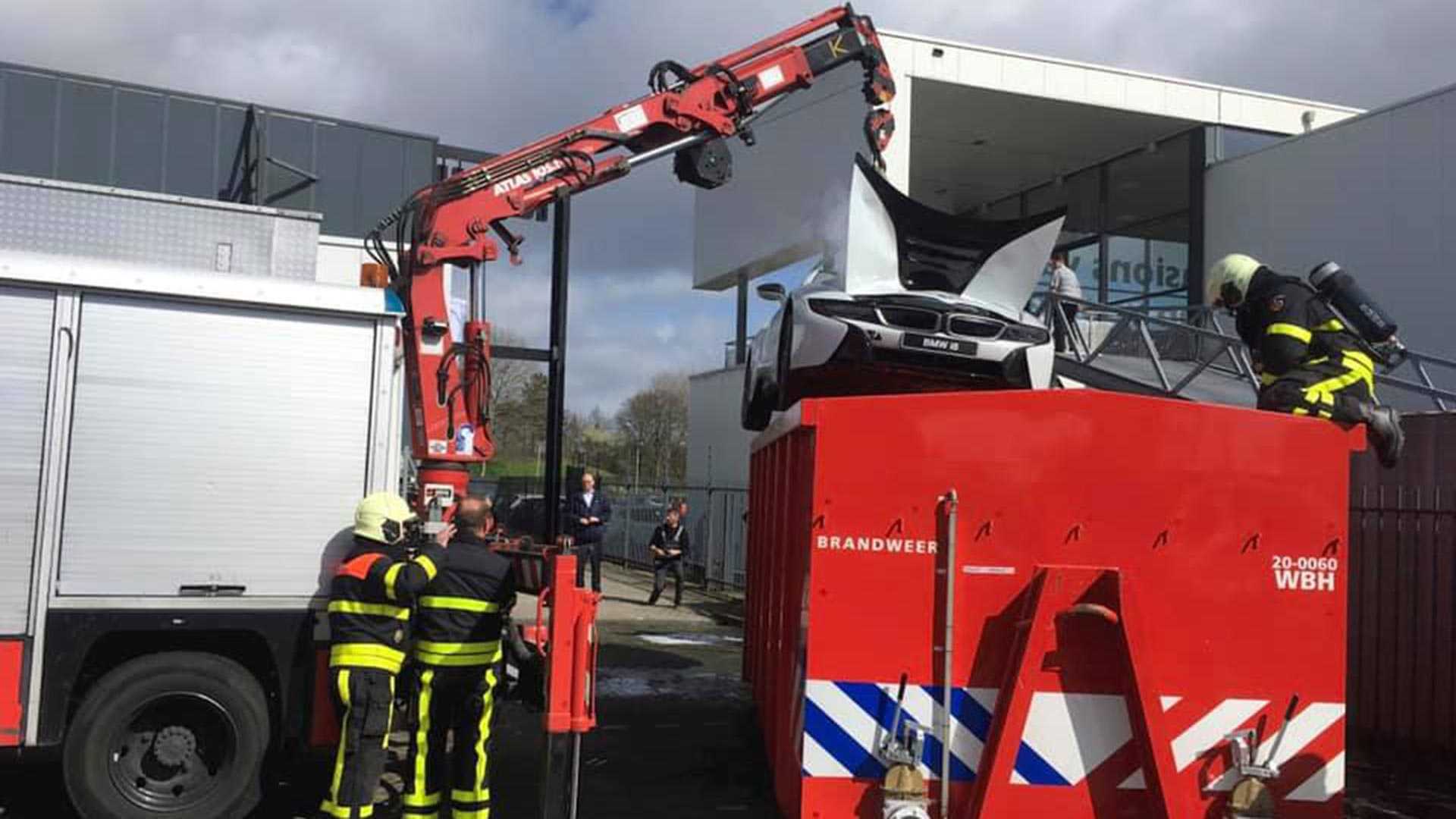
A Netherlands fire department has doused a $318,000 BMW i8 in a tank of water for 24 hours to extinguish an onboard battery blaze.
Brandweer Nederland’s North Brabant station was called to a local BMW dealership, where a BMW i8 had started to smoke ominously from an unknown source.
The hybrid i8 was quickly moved outside, where the local fire crew had deployed a specially built truck to help contain the fire.

Our Dutch firey friends utilised a clever system to fight electrical fires, though. A flatbed truck equipped with a crane and a large container of water was dispatched to the dealership. The container was swung off the truck, and the crane was then used to lower the offending vehicle into the water, where it stayed for at least 24 hours.
“This morning an electric car started to smoke in a showroom,” reads a report on the fire station’s social feed. “The employees of the garage and the fire brigade acted quickly to drive the car outside. Because it is an electric car, inventive action was necessary.”

The brand new two-door i8 coupe, of course, was a complete write-off.
Electrical fires are notoriously hard to put out, with copious amounts of water required to extinguish them. Tesla, for example, advises that a battery fire could take 24 hours to put out and could require up to 11,000 litres of water.
Despite that, a damaged battery may re-ignite after it has been extinguished, as evidenced by fires breaking out in crash-tested EVs stored in holding yards. Tesla has reportedly donated hundreds of vehicles to emergency response teams in its home state of California in order for training to be carried out.
Emergency response teams are also receiving training around the world to deal with the high-voltage cabling that EVs are equipped with. Standing instructions include avoiding large orange cables aboard current EVs, as they are capable of carrying up to 400 deadly volts of current.
As vehicle electrification becomes more common, the dangers of high-voltage chargers will need to be taken into account, as well.
Porsche, for example, has already had to recall a brace of high-output 800v chargers because the cables were melting – and this is well before the launch of the brand’s Taycan sportscar, which Porsche claims can be charged to 8-0 percent capacity in 15 minutes.



